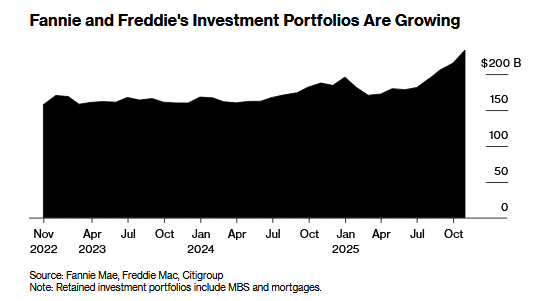In the last section of his Bureaucracy, Ludwig von Mises laments the loss of the “critical sense” that protected people from authoritarianism (Mises 1944, 108). According to Mises, this was the fault of the bureaucratization of education, which taught students falsehoods, especially in economics (Mises 1944, 82). A prime example was the academic class in the German Empire, which formed an “intellectual bodyguard” (Mises 1944, 82) of the empire’s policies.
However, Mises wrote his book in 1944 before bureaucracy dominated American universities. In 1950, students were divided evenly between public and private colleges (Edwards 2000, 130), compared to 77 percent of students going to public universities today. America is undergoing the bureaucratization that Mises warned of. Yet this is not inevitable; some institutions have avoided bureaucratization. Foremost among them is Grove City College. Since its founding, Grove City has struggled to maintain its independence. Due to its dedication to the principles of faith and freedom, the college stands as a bastion of educational independence. Contrasting Grove City College with general trends can provide a roadmap for others to resist bureaucratization.
Bureaucracy in Public and Private Colleges
Mises’s definition of bureaucratic management as “management bound to comply with detailed rules and regulations fixed by a higher body” (Mises 1944, 45) applies to both public and private colleges. Public colleges and universities are operated as publicly owned firms that Mises would classify as bureaucratic. They provide goods and services but do not operate off a profit motive since they are subsidized by the government (Mises 1944, 59). Considering approximately 38 percent of all public university funding comes directly from the government, it can be said that public universities depend on that funding. Additionally, public universities are governed through a bureaucratic process. University governing boards are either chosen by state legislatures directly or are subject to boards of governors that manage public schools. For example, in the state of Florida, all public colleges and universities are subject to the state’s Board of Governors. States may have slightly different systems, but the governance is always bureaucratic.
Private colleges and universities, on the other hand, are bureaucratized through indirect ways. Mises explained a similar phenomenon in continental Europe when private enterprises depended on the government to operate (Mises 1944, 72). Indirect ways include the regulation attached to funding and accreditation. For example, in 1987, Congress passed the Civil Rights Restoration Act, which mandated that any institution taking federal funding must comply with civil rights regulation (Edwards 2000, 223). Considering 9 percent of all private school funding comes directly from the government and even more through indirect aid to students, most private schools must abide by government regulation. These have spurred a class of administrators responsible for compliance, contributing to administrative bloat (Vedder 2019, 193). Another way colleges are bureaucratized is through accreditation. To be eligible for federal funds, a school must be accredited through an accreditation agency (Vedder 2019, 255). In turn, these agencies are approved by the Department of Education (Hall 2012, 236). The various accreditation agencies need to maintain standards among member colleges set by the Department of Education. Institutions that lose accreditation are likely to go bankrupt.
Problems of Bureaucratization
Once a particular part of the economy is bureaucratized, then it becomes difficult for it to operate off the profit-and-loss system (Mises 1944, 59). Thus, it becomes inefficient and poorly serves consumers. Higher education is no different. The bureaucratization process results in a lowering of standards, an ideological culture, and administrative bloat.
Bureaucratization causes universities to ill-prepare students for life after college. Higher education is not solely about vocational training; it should equip students with necessary skills such as critical thinking, work ethic, and teamwork (Caplan 2018, 18). These foundational skills are transferable between the classroom and the workplace. However, schools are failing to teach students these skills. Curiously, while students in the early 1960s on average had below a 3.0 grade point average (GPA) (Vedder 2019, 56) and studied forty hours a week (Vedder 2019, 57), today the median college GPA is 3.28 while students on average only studied seventeen hours a week. Since students are working less, they are not learning the skills they need. Blame rests upon the bureaucracy. When the government started giving aid to students, college enrollment and profits soared. However, schools only keep this funding if students stay enrolled. There is an incentive to lower standards to maximize enrollment. Unfortunately, this comes at the cost of student preparedness.
Ideological Culture
Mises observed that if an organization was not governed by profit and loss, it must have another animating ethos (Mises 1944, 60). In modern higher education, that ethos is ideology, specifically radical leftism. Today, liberals outnumber conservatives, with eight Democrat professors for every Republican (Lukianoff and Schlott 2023, 57). Moreover, dissenting professors believe they are being pressured to not express their beliefs. A shocking 72 percent of conservative faculty worried that they may lose their jobs or reputation due to their opinions in 2022 (Lukianoff and Schlott 2023, 59). Some institutions are outwardly stifling free speech with bias reporting systems. These systems encourage students to report “offensive language” to authorities. A survey of 824 American colleges found that 456 institutions maintained bias reporting systems. Understandably, 80 percent of college students say they self-censor their speech. The majority of colleges are ideological strongholds, not centers of free inquiry.
Lastly, bureaucratization causes administrative bloat. Between 1976 and 2018, student enrollment rose by 78 percent, full-time faculty by 82 percent, full-time administrators grew by 164 percent, and nonteaching professionals by 465 percent. Many of these administrators and professionals act as bureaucrats in the college system. Their growth is due to a lack of profit signals needed to optimize efficiency. In the absence of market signals, there is no way for bureaucratic managers to know what goods or services citizens demand. They focus on their own departments, trying to improve their performance, which can always be improved with more resources (Mises 1944, 62). In higher education, administrators try to improve their offices by expanding them. As bureaucracies expand in higher education, so do their costs. In the 1929–30 school year, administrative and general expenses consumed 11 percent of total higher education spending (Vedder 2019, 176) as compared to 23 percent today. The bloat of bureaucracy is increasingly costly for higher education.
The Exception: Grove City College
Grove City College, nicknamed Freedom’s College, remains a beacon of independence in higher education. Founded in 1876 by Isaac Ketler, the college pursues the mission of sending “out young men and women who do not only have well-trained and efficient minds but who possess well-rounded personalities, who respond to high motives, and who follow high ideals” (Edwards 2000, 54). The college remains true to this mission and has avoided many bureaucratic pitfalls. Academically, Grove City students rank above national averages. For example, in 2021, average Grove City College student Major Field Test scores were above 81 percent of national scores. Moreover, students retain a critical sense through training in theology, social science, philosophy, and empirical science as part of the liberal arts curriculum. This curriculum is designed to equip students with a Christian worldview (Van Til 2015, 118). However, Grove City College has faced challenges of bureaucratization in the past that required school leaders to exert an intentional effort to resist.
Grove City College has not taken government aid directly for over a century. In fact, it has been hostile to federal funding. In the aftermath of World War II when the government began to give funds to colleges, J. Howard Pew, the President of the Board of Trustees, said about government subsidies that “little by little this control will expand until like a blighting cancer, it will infect our whole education system” (Edwards 2000, 114). The college’s commitment to independence was often inconvenient. During the 1960s, President Stanley Harker had trouble fundraising for the Mary Anderson Pew North Dormitory because possible donors expected the college to pursue federal aid (Dayton 1973, 219). Thankfully, the building was completed with private funds. Even during the Supreme Court case Grove City College v. Bell, the college maintained that it had never taken a grant, loan, or any other kind of aid from the government (Edwards 2000, 199). The policy of not accepting federal funds continues to the present day, protecting the college from bureaucratization. In 2021, the Biden administration required all federal contractors to comply with covid-19 vaccine mandates. This included many universities that have contracts with the government. Yet, Grove City College did not mandate vaccines because it did not have any business with the federal government.
Unlike the rest of higher education, Grove City College has remained anti-ideological. From its beginning, Grove City College has been nondenominational, although it leaned Reformed theologically (Edwards 2000, 20). President Stanley Harker, who headed the college from 1956–1971, said, “In our search for truth, we must objectively pursue all viewpoints on our campus, living within our heritage under a Christian umbrella” (Van Til 2015, 94). Never has Grove City College been an echo chamber. After Harker retired in 1971, Charles MacKenzie was selected as Grove City College’s new president. One of his biggest achievements was the Keystone curriculum, Grove City’s eighteen hours of liberal arts core (Edwards 2000, 236). Today, the curriculum exposes students to different perspectives in various disciplines and encourages critical thinking, yet it does this from a Christian perspective. In 2022, after cries from students and alumni to ban supposed critical race theory on campus, the Board of Trustees answered, “Controversial subjects can only be studied through critical examination of contending views.” Despite pressure from all sides, Grove City maintains a nonideological atmosphere.
One of the larger challenges Grove City College faced came in 1976 in the form of a letter from the Department of Health, Education, and Welfare (HEW). It required the college to comply with Title IX sex antidiscrimination regulations (Edwards 2000, 196). If the college refused, then all government funds to students would be cut off. At this time, a quarter of Grove City students received federal aid (Edwards 2000, 198). Interestingly, the government did not accuse Grove City of ever discriminating against women (Graham 1998, 414). Instead, the HEW wanted the college’s assurance to abide by regulations, even when no violation happened. Bravely, MacKenzie, with the support of the Board of Trustees, refused to sign the letter. When HEW terminated all aid to students, the college sued. The result was an eight-year legal battle culminating in the 1984 Supreme Court case: Grove City College v. Bell. The result was a mixed victory with the court ruling that even indirect aid brought colleges under Title IX regulation but that the regulation only applied to the department of the college receiving the aid (Edwards 2000, 219). For Grove City College, only the financial aid office would be subject to Title IX, the rest of the institution would be free. The decision halted several federal investigations into universities and schools across the country for Title IX violations (Graham 1998, 418). Since then, Grove City has not taken any government aid.
Looking Forward
Grove City’s achievements can hardly be overemphasized. However, the battle for independence is far from over. A new challenge is brewing through accreditation. Grove City College’s accrediting agency, the Middle States Commission on Higher Education (MSCHE), has revised its accreditation guidelines to include diversity, equity, and inclusion (DEI) principles. The newest Standards for Accreditation and Requirements of Affiliation of the MSCHE includes DEI as one of its five “Guiding Principles.” Grove City College will be required to demonstrate “evidence of alignment between mission, strategic goals, and diversity, equity, and inclusion principle.” These guidelines will be applicable to Grove City College during the next accreditation visit in 2027.
While Grove City College must meet future challenges, it should be proud of its past. It is an exceptional institution. As discussed, this is not Grove City’s first battle with bureaucratization. The college has a history of fighting for faith and freedom. Through a commitment to independence and Christian beliefs, Grove City College has maintained high standards, avoided ideological takeover, and minimized administrative bloat. Grove City College remains a model for maintaining critical sense.
References
Caplan, Byan. 2018. The Case against Education: Why the Education System Is a Waste of Time and Money. Princeton, NJ: Princeton University Press.
Dayton, David M. 1973. 'Mid the Pines: A History of Grove City College. Grove City, PA: Grove City College Alumni Association.
Edwards, Lee. 2000. Freedom's College. Washington, DC: Regnery Publishing.
Graham, Hugh Davis. 1998. “The Storm over Grove City College: Civil Rights Regulation, Higher Education, and the Reagan Administration.” History of Education Quarterly 38 (4): 407–29. https://doi.org/10.2307/369849.
Hall, Joshua. 2012. “Higher-Education Accreditation: Market Regulation or Government Regulation?” Independent Review 17, no. 2 (Fall): 233–38. http://www.jstor.org/stable/24563103.
Lukianoff, Greg, and Rikki Schlott. 2023. The Canceling of the American Mind. New York: Simon and Schuster.
Mises, Ludwig von. 1944. Bureaucracy. New Haven, CT: Yale University Press. https://mises.org/library/book/bureaucracy.
Van Til, L. John. 2015. The Soul of Grove City College: A Personal History. Self-published, CreateSpace Independent Publishing Platform.
Vedder, Richard K. 2019. Restoring the Promise. Oakland, CA: Independent Institute.
Full story here Are you the author? Previous post See more for Next postTags: Featured,newsletter




























